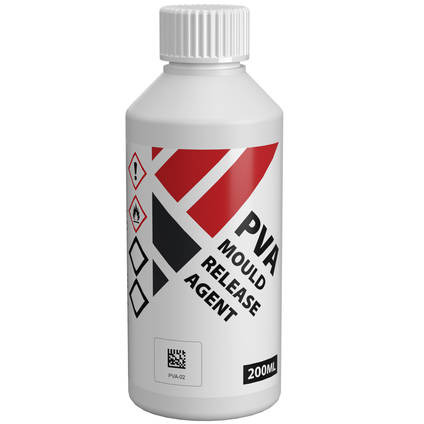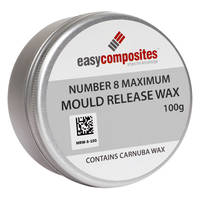Heb je hulp of advies nodig?+44 (0)1782 454499
Downloads (2)
Dit is een chemisch product. Voor opslag of gebruik moet u de bijgevoegde veiligheids- en technische informatiebladen downloaden en lezen.
| Veiligheidsinformatieblad (SDS) - NL | ||
| Veiligheidsinformatieblad (SDS) - NL |
Specificatie
Productgegevens
| Max. Onderhoudstemperatuur | 60 | °C |
|---|
Algemene Eigenschappen
| Brutogewicht | 0.246 | kg |
|---|
Verzendinformatie
Beperkingen
Dit product is geclassificeerd als gevaarlijke goederen voor transport.
Het kan worden verzonden naar alle landen op het vasteland van de EU, Ierland, de Balearen, Corsica, Sicilië en Sardinië.
Helaas kunnen we op dit moment geen gevaarlijke goederen verzenden naar Cyprus, Malta, de Canarische Eilanden, Ceuta, Melilla, Jan Mayan en Spitsbergen.
Zie onze pagina met leveringsinformatie voor volledige informatie over de verzending van gevaarlijke goederen.
Verpakkingsgrootte
Er zijn geen beperkingen op de pakketgrootte of toeslagen voor dit product.
Verzendkosten
Om de bezorgkosten van dit artikel naar uw adres te achterhalen, voegt u het toe aan uw winkelwagen en gebruikt u vervolgens de directe verzendkosten calculator op de winkelwagenpagina.
PVA Schimmelvrijmiddel
- PVA-02
Gevaarlijk
- Geen Beoordelingen
PVA is een traditioneel lossingsmiddel voor mallen (niet hetzelfde als PVA lijm!) en kan op een groot aantal patroon- en maloppervlakken worden aangebracht of gespoten om een zeer compatibele en betrouwbare lossingsbarrière te vormen voor polyester, vinylester en epoxy composieten. PVA laat echter wel zichtbare 'wervelingen' achter in mallen en moet elke keer worden schoongemaakt en opnieuw worden aangebracht. Daarom wordt het meestal alleen gebruikt in situaties waar een gietwas of chemisch lossingsmiddel ongeschikt zou zijn.
Online te koop in verpakkingen van 200 ml en 1 liter.
PRODUCTVERSIES
Verpakkingsgrootte
BESCHIKBAARHEID:Meer dan 10 beschikbaarvoor onmiddellijke verzending
We zijn niet te verslaan op prijs!
Als u denkt dat u elders een gelijkwaardig product goedkoper kunt kopen, neem dan contact met ons op om uw wensen te bespreken.
PVA (Poly Vinyl Alcohol, niet te verwarren met Poly Vinyl Acetaat houtlijm) matrijslosmiddel kan worden afgeveegd, gesponst of gespoten op een breed scala van patroon- en matrijsoppervlakken om een zeer compatibele en betrouwbare loslaatbarrière te bieden voor polyester, vinylester en epoxy composieten.
PVA is vaak het eerste keuze lossingsmiddel wanneer er een verhoogd risico is dat een mal aan een patroon blijft kleven of dat een onderdeel aan een mal blijft kleven, zoals bij het gebruik van patronen of mallen voor de eerste paar releases of bij het gebruik van mogelijk incompatibele harssystemen voor de mal en het onderdeel (bijvoorbeeld bij het gebruik van polyester mallen om epoxy onderdelen te maken).
Meer informatie
Aanmeldingsinstructies
Als PVA op de juiste manier wordt aangebracht, zal het waarschijnlijk niet falen als lossingsmiddel, maar of het nu met een doek wordt aangebracht of op een matrijsoppervlak wordt gespoten, het zal altijd een lichte textuur achterlaten op het afgewerkte onderdeel die moet worden weggepolijst. Om deze reden wordt PVA vaak alleen gebruikt voor de eerste paar releases of wanneer release problemen waarschijnlijker zijn. Een mal die een paar keer is vrijgegeven en die gemaakt is van een materiaal dat geschikt is voor de onderdelen die u gaat maken, kan dan worden vervangen door gietwas die kan worden gepolijst om een spiegelende afwerking achter te laten op de vrijgegeven onderdelen (wat PVA niet kan).
Zorg er eerst voor dat het oppervlak van de mal goed is afgedicht (poreuze oppervlakken zoals hout of gips moeten worden afgedicht voordat ze kunnen worden gebruikt als patroon of mal), schoon en vrij van verontreinigingen.
Breng met een schone, pluisvrije doek een redelijke hoeveelheid PVA Mould Release Agent aan op een deel van de doek. De doek moet goed bevochtigd worden door de PVA op deze plek.
Veeg met de doek in een vloeiende beweging over het oppervlak van de mal. De PVA heeft een donkerblauwe dobbelsteen zodat je kunt zien waar je bent geweest. Zorg ervoor dat je het hele oppervlak van de mal bedekt met een dunne blauwe laag, waarbij je vooral aandacht besteedt aan krappe hoeken.
PVA wordt altijd maar in één laag aangebracht. Probeer geen tweede laag aan te brengen, want dan verwijder je gewoon de eerste laag als je de tweede laag probeert aan te brengen en krijg je een ongelijkmatiger oppervlak.
Laat de PVA volledig drogen (ongeveer 15 minuten) voordat je begint met lamineren.
Als je een mal opnieuw gebruikt, moet je alle sporen van de PVA verwijderen met water en grondig schoonmaken voordat je opnieuw PVA aanbrengt.
Het loslaten van een mal kan worden ondersteund met water dat de PVA oplost en de mal of het onderdeel helpt los te laten.
PVA (Poly Vinyl Alcohol, niet te verwarren met Poly Vinyl Acetaat houtlijm) matrijslosmiddel kan worden afgeveegd, gesponst of gespoten op een breed scala van patroon- en matrijsoppervlakken om een zeer compatibele en betrouwbare loslaatbarrière te bieden voor polyester, vinylester en epoxy composieten.
PVA is vaak het eerste keuze lossingsmiddel wanneer er een verhoogd risico is dat een mal aan een patroon blijft kleven of dat een onderdeel aan een mal blijft kleven, zoals bij het gebruik van patronen of mallen voor de eerste paar releases of bij het gebruik van mogelijk incompatibele harssystemen voor de mal en het onderdeel (bijvoorbeeld bij het gebruik van polyester mallen om epoxy onderdelen te maken).
Meer informatie
Aanmeldingsinstructies
Als PVA op de juiste manier wordt aangebracht, zal het waarschijnlijk niet falen als lossingsmiddel, maar of het nu met een doek wordt aangebracht of op een matrijsoppervlak wordt gespoten, het zal altijd een lichte textuur achterlaten op het afgewerkte onderdeel die moet worden weggepolijst. Om deze reden wordt PVA vaak alleen gebruikt voor de eerste paar releases of wanneer release problemen waarschijnlijker zijn. Een mal die een paar keer is vrijgegeven en die gemaakt is van een materiaal dat geschikt is voor de onderdelen die u gaat maken, kan dan worden vervangen door gietwas die kan worden gepolijst om een spiegelende afwerking achter te laten op de vrijgegeven onderdelen (wat PVA niet kan).
Zorg er eerst voor dat het oppervlak van de mal goed is afgedicht (poreuze oppervlakken zoals hout of gips moeten worden afgedicht voordat ze kunnen worden gebruikt als patroon of mal), schoon en vrij van verontreinigingen.
Breng met een schone, pluisvrije doek een redelijke hoeveelheid PVA Mould Release Agent aan op een deel van de doek. De doek moet goed bevochtigd worden door de PVA op deze plek.
Veeg met de doek in een vloeiende beweging over het oppervlak van de mal. De PVA heeft een donkerblauwe dobbelsteen zodat je kunt zien waar je bent geweest. Zorg ervoor dat je het hele oppervlak van de mal bedekt met een dunne blauwe laag, waarbij je vooral aandacht besteedt aan krappe hoeken.
PVA wordt altijd maar in één laag aangebracht. Probeer geen tweede laag aan te brengen, want dan verwijder je gewoon de eerste laag als je de tweede laag probeert aan te brengen en krijg je een ongelijkmatiger oppervlak.
Laat de PVA volledig drogen (ongeveer 15 minuten) voordat je begint met lamineren.
Als je een mal opnieuw gebruikt, moet je alle sporen van de PVA verwijderen met water en grondig schoonmaken voordat je opnieuw PVA aanbrengt.
Het loslaten van een mal kan worden ondersteund met water dat de PVA oplost en de mal of het onderdeel helpt los te laten.
Specificatie
Productgegevens
| Max. Onderhoudstemperatuur | 60 | °C |
|---|
Algemene Eigenschappen
| Brutogewicht | 0.246 | kg |
|---|
De PVA heeft een blauwe tint om het aanbrengen van een gelijkmatige laagdikte te vergemakkelijken. Het is niet verkrijgbaar zonder de kleurstof. Je kunt dus vlekken krijgen op je oppervlak na gebruik.
Als je een Gelcoat spuitpistool gebruikt, dan wil je zeker onze kleinste 1mm spuitmond gebruiken. De lage viscositeit van het PVA lossingsmiddel betekent dat je eigenlijk een algemeen goedkoop en vrolijk HPLV verfspuitpistool met goed effect kunt gebruiken.
Theoretische dekking is tussen 25ml en 40ml per vierkante meter. Het gebruik kan echter variëren afhankelijk van het oppervlak waarop de PVA wordt aangebracht.
Ja, mensen doen dit soms. Als je het gaat proberen dan is de volgorde was dan PVA, maar wat je waarschijnlijk zult vinden is dat de PVA zo erg van de was weg 'vist' dat het bijna onmogelijk is om een soort laag PVA op een gewaxt oppervlak te krijgen. Normaal gesproken eindig je met een paar vlekken PVA in sommige hoeken en dan strepen/parels in lijnen waar de wax het heeft afgestoten. Als dit niet gebeurt, is dat meestal een goede indicatie dat je de wax niet goed hebt aangebracht!
Als je geschikte materialen gebruikt voor je patronen en/of mallen, dan zou het nooit nodig moeten zijn om zowel wax als PVA te gebruiken, slechts één (meestal wax) op de juiste manier aangebracht is voldoende.
De maximale gebruikstemperatuur is 60C.
Het is bijna onmogelijk om een perfecte afwerking te krijgen met PVA lossingsmiddel. Je kunt de afwerking verbeteren door het te spuiten, wat zal resulteren in een gladdere afwerking, maar het zal er nog steeds mat of satijnachtig uitzien. Als je een echt glanzende afwerking op je mallen wilt, moet je Number 8 Mould Release Wax of Easy-Lease Chemical Release Agent gebruiken.
De blauwe resten die achterblijven op het onderdeel (of de mal) na het gebruik van PVA kunnen eenvoudig en snel worden verwijderd door het onderdeel met warm water af te wassen.
STEL UW EIGEN VRAAG
Productbeoordelingen van klanten voor PVA-schimmellosmiddel
DIEN UW EIGEN PRODUCTBEOORDELING IN
We publiceren alle beoordelingen van geverifieerde aankopen. Dien uw eigen beoordeling in en help andere klanten bij hun keuze.DIEN UW EIGEN PRODUCTBEOORDELING IN
We publiceren alle beoordelingen van geverifieerde aankopen. Dien uw eigen beoordeling in en help andere klanten bij hun keuze.Verzendinformatie
Beperkingen
Dit product is geclassificeerd als gevaarlijke goederen voor transport.
Het kan worden verzonden naar alle landen op het vasteland van de EU, Ierland, de Balearen, Corsica, Sicilië en Sardinië.
Helaas kunnen we op dit moment geen gevaarlijke goederen verzenden naar Cyprus, Malta, de Canarische Eilanden, Ceuta, Melilla, Jan Mayan en Spitsbergen.
Zie onze pagina met leveringsinformatie voor volledige informatie over de verzending van gevaarlijke goederen.
Verpakkingsgrootte
Er zijn geen beperkingen op de pakketgrootte of toeslagen voor dit product.
Verzendkosten
Om de bezorgkosten van dit artikel naar uw adres te achterhalen, voegt u het toe aan uw winkelwagen en gebruikt u vervolgens de directe verzendkosten calculator op de winkelwagenpagina.
KLANTEN KOCHTEN OOK
KLANTEN KOCHTEN OOK
100% BEVEILIGD
BETALINGSMETHODEN
Easy Composites EU B.V., geregistreerd in Nederland 73601195. Alle inhoud auteursrechtelijk beschermd (C) Easy Composites Ltd, 2025. Alle rechten voorbehouden.

